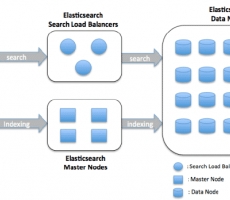-
Read More

Our Experience of Creating Large Scale Log Search System Using ElasticSearch
Written by Lee Jae Ik on 05/01/2018 At NHN, we have a service called NELO (NHN Error Log System) to manage and search logs pushed to the system by various applications and other Web services. The search performance and functionality of NELO2, the second generation of the system, have significantly been improved through ElasticSearch. Today I would like to share our experience at NHN in deploying ElasticSearch in Log Search Systems. ElasticSearch is a distributed search engine based on Lucene developed by Shay Banon. Shay and his team have recently released the long-awaited version 0.90. Here is a link to a one-hour recorded webinar where Clinton Gormley, one of the core ElasticSearch developers, explains what's new in ElasticSearch 0.90. If you are developing a system which requires a searc... -
Read More

A Node.js speed dilemma: AJAX or Socket.IO?
Written by CUBRID Community on 07/14/2017 One of the first things I stumbled upon when I started my first Node.js project was how to handle the communication between the browser (the client) and my middleware (the middleware being a Node.js application using the CUBRID Node.js driver (node-cubrid) to exchange information with a CUBRID 8.4.1 database). I am already familiar with AJAX (btw, thank God for jQuery!!) but, while studying Node.js, I found out about the Socket.IO module and even found some pretty nice code examples on the internet... Examples which were very-very easy to (re)use... So this quickly becomes a dilemma: what to choose, AJAX or sockets.io? Obviously, as my experience was quite limited, first I needed more information from out there... In other words, it was time to do s... -
Read More

Become a Jave GC Expert Series 5 : The Principles of Java Application Performance Tuning
Written by Se Hoon Park on 06/30/2017 This is the fifth article in the series of "Become a Java GC Expert". In the first issue Understanding Java Garbage Collection we have learned about the processes for different GC algorithms, about how GC works, what Young and Old Generation is, what you should know about the 5 types of GC in the new JDK 7, and what the performance implications are for each of these GC types. In the second article How to Monitor Java Garbage Collection we have explained how JVM actually runs the Garbage Collection in the real time, how we can monitor GC, and which tools we can use to make this process faster and more effective. In the third article How to Tune Java Garbage Collection we have shown some of the best options based on real cases as our examples that you can... -
Read More

Become a Jave GC Expert Series 4 : MaxClients in Apache and its effect on Tomcat during Full GC
Written by Dongsoon Choi on 06/23/2017 This is the fourth article in the series of "Become a Java GC Expert". In the first issue Understanding Java Garbage Collection we have learned about the processes for different GC algorithms, about how GC works, what Young and Old Generation is, what you should know about the 5 types of GC in the new JDK 7, and what the performance implications are for each of these GC types. In the second article How to Monitor Java Garbage Collection we have explained how JVM actually runs the Garbage Collection in the real time, how we can monitor GC, and which tools we can use to make this process faster and more effective. In the third article How to Tune Java Garbage Collection we have shown some of the best options based on real cases as our examples that you c... -
Read More

Understanding Vert.x Architecture - Part II
Written by Jaehong Kim on 06/16/2017 Previous blog article covered Vert.x, a Java application framework which provides noticeable performance advantage over competing technologies and features multi programming language support. The previous article has explained us about the philosophy of Vert.x, performance comparison with Node.js, internal structure of Vert.x, and many more. Today, I would like to continue this conversation and talk more about Vert.x architecture. Considerations Used to Develop Vert.x Polyglot is the feature making Vert.x stand out from other server frameworks. In the past, server frameworks could not support multiple languages. Supporting several languages does more than expand the range of users. More important thing is that services using different languages in a dist...



